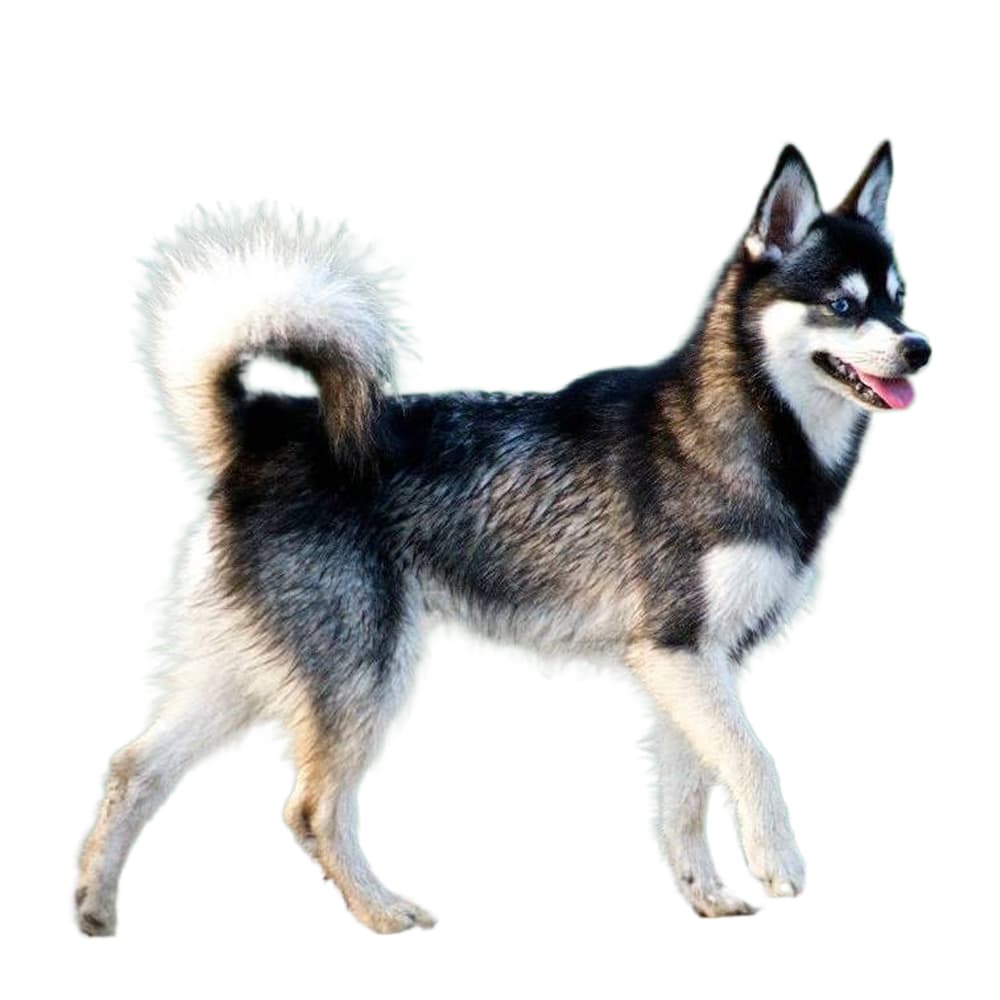Discover your dog's connection to this breed and 200+ others


Discover your dog's connection to this breed and 200+ others



The Alaskan Klee Kai is a relatively recent breed that was first developed in the 1970s in Alaska by a breeder named Linda Spurlin. It was her aim to create a dog that looked like a smaller version of the Siberian and Alaskan Huskies. The breed's name roughly translates to "small dog" in the Inuit language. To reach her goal, Spurlin mixed Alaskan and Siberian Huskies with smaller breeds such as the American Eskimo Dog and Schipperke. The breed was officially recognized by the American Rare Breed Association (ARBA) in 1995 and by the United Kennel Club (UKC) in 1997.
Alaskan Klee Kai can suffer from Factor VII deficiency, hypothyroidism, patellar luxation, thyroid disease including autoimmune thyroiditis, heart murmurs, juvenile cataracts and other eye conditions, liver disease, pyometra, and cryptorchidism.
The Alaskan Klee Kai is known for being intelligent, active, and somewhat reserved. They are not typically overly friendly with strangers, which can make them good watchdogs, but they are very loyal and loving with their families. Alaskan Klee Kais are also known for their high energy levels and need for regular exercise. They can be quite vocal, often "talking" to their owners, and can sometimes display a strong prey drive. Training and socialization from an early age are very important for this breed to help manage their energy levels and ensure they are comfortable around strangers and other animals
A canine genetic lineage is a group of individuals or entire breeds that descended from common ancestors predating modern breed formation. Often these lineages are associated with a ‘type’ of dog with a unique historical working role and associated behaviors (e.g., herding, scent hunting, etc.).
Spitz and Sled Dogs originate in the Arctic and subarctic regions which caused them the develop adaptations to cold climates. Some of these adaptations give rise to characteristics of the lineage, most notably a dense double coat that helps with insulation. The lineage of these dogs can be followed back to ancient breeds developed by Indigenous people. These ancient breeds were used as an aid for transportation, herding, guarding, and hunting. These jobs have created dogs that are independent, intelligent and have strong work ethics as well as a sturdy body that helps them to pull sleds or go on long journeys over rough terrain.
Example breeds with ancestry from this lineage include Akita, Chow Chow, and Siberian Husky.
According to the AKC, the breed name Alaskan "Klee Kai" is derived from Alaskan Athabaskan words that mean "little dog".
https://www.ukcdogs.com/alaskan-klee-kai
https://www.akc.org/dog-breeds/alaskan-klee-kai/
DOI: 10.1002/9781119540687
https://onlinelibrary.wiley.com/doi/abs/10.1111/j.1939-1676.2007.tb03052.x
https://www.petmd.com/dog/breeds/c_dg_alaskan_klee_kai
Recommended by top vets with decades of experience
21 breeds
64 genetic health markers
50 genetic trait markers
